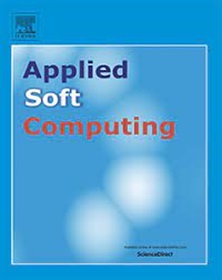分数阶偏微分方程的分数阶基函数多步神经网络方法
IF 6.6
1区 计算机科学
Q1 COMPUTER SCIENCE, ARTIFICIAL INTELLIGENCE
引用次数: 0
摘要
随着人工智能技术的进步,越来越多的研究人员利用人工智能来求解海洋工程中的复杂方程。因此人工智能技术已经成为一个实用的研究领域。本文设计了一种求解分数阶长水波方程的新方法——分数阶基函数多步神经网络。首先,基于分数阶基函数构造幂级数作为近似解;其次,将神经网络和微分方程的初始条件集成到近似解的构造中。此外,将解离散化,并对离散解采用多步展开策略。这种方法确保解决方案中的每个点都受到其前身的影响。通过优化算法的反复应用,残差逐渐减小,从而得到方程的近似解。最后,通过一系列数值实验验证了该策略的有效性和通用性。与分数物理信息神经网络方法相比,平均残差和最大残差的稳定性分别提高了18.7倍和22.8倍。同时,在新的解中保留初始条件。本文章由计算机程序翻译,如有差异,请以英文原文为准。
FFNN: Fractional order basis function multi-step neural network method for fractional partial differential equations
With the advancement in artificial intelligence technology, the increasing number of researchers utilize it to address complex equations in ocean engineering. So the technology of artificial intelligence has become a practical area of research. In this paper, we design a novel method to solve the fractional order long water wave equation, which is called the fractional order basis function multi-step neural network. Firstly, a power series is constructed based on a fractional order basis function, which serves as the approximate solution. Secondly, neural networks and the initial conditions of differential equations are integrated into the construction of approximate solutions. Furthermore, the solution is discretized, and a multi-step unfolding strategy is employed on the resulting discrete solution. This approach ensures that each point in the solution is influenced by its predecessor. By means of repeated applications of the optimization algorithm, the residuals are successively diminished, thereby yielding approximate solutions to the equations. Finally, the efficacy and versatility of the proposed strategy were validated through a series of numerical experiments. Compared with the method of fractional physics-informed neural networks, there are up to -fold and -fold increases in stability of average and maximum residuals. Simultaneously, initial conditions are retained in new solutions.
求助全文
通过发布文献求助,成功后即可免费获取论文全文。
去求助
来源期刊

Applied Soft Computing
工程技术-计算机:跨学科应用
CiteScore
15.80
自引率
6.90%
发文量
874
审稿时长
10.9 months
期刊介绍:
Applied Soft Computing is an international journal promoting an integrated view of soft computing to solve real life problems.The focus is to publish the highest quality research in application and convergence of the areas of Fuzzy Logic, Neural Networks, Evolutionary Computing, Rough Sets and other similar techniques to address real world complexities.
Applied Soft Computing is a rolling publication: articles are published as soon as the editor-in-chief has accepted them. Therefore, the web site will continuously be updated with new articles and the publication time will be short.
 求助内容:
求助内容: 应助结果提醒方式:
应助结果提醒方式:


